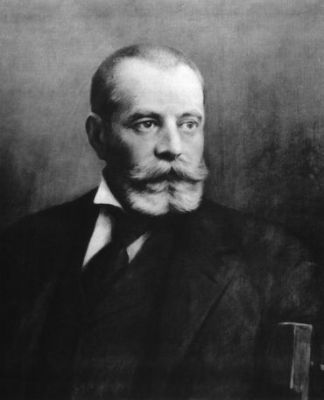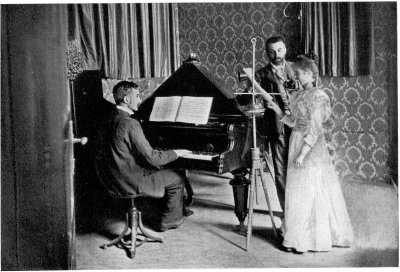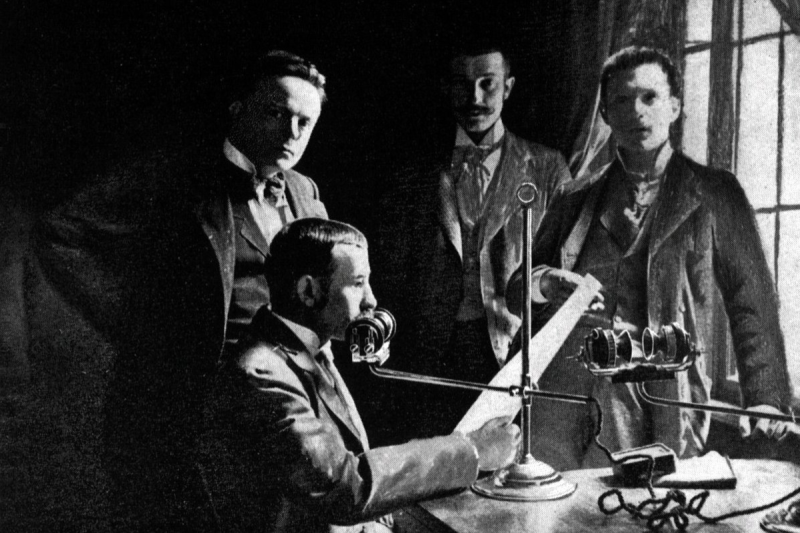When do you think the first podcast occurred? Did you guess in the 1890s? That’s not a typo. Telefonhírmondó was possibly the world’s first true “telephone newspaper.” People in Budapest could dial a phone number and listen to what we would think of now as radio content. Surprisingly, the service lasted until 1944, although after 1925, it was rebroadcasting a radio station’s programming.

The whole thing was the brainchild of Tivadar Puskás, an engineer who had worked with Thomas Edison. At first, the service had about 60 subscribers, but Puskás envisioned the service one day spanning the globe. Of course, he wasn’t wrong. There was a market for worldwide audio programs, but they were not going to travel over phone lines to the customer.
The Hungarian government kept tight control over newspapers in those days. However, as we see in modern times, new media often slips through the cracks. After two weeks of proving the concept out, Puskás asked for formal approval and for a 50-year exclusive franchise for the city of Budapest. They would eventually approve the former, but not the latter.
Unfortunately, a month into the new venture, Puskás died. His brother Albert took over and continued talks with the government. The phone company wanted a piece of the action, as did the government. Before anything was settled, Albert sold the company to István Popper. He finalized the deal, which included rules requiring signed copies of the news reports to be sent to the police three times a day. The affair must have been lucrative. The company would eventually construct its own telephone network independent of the normal phone system. By 1907, they boasted 15,000 subscribers, including notable politicians and businesses, including hotels.
Invention
This was all possible because of Puskás’ 1892 invention of a telephone switchboard with a mechanism that could send a signal to multiple lines at once. The Canadian patent was titled “Telephonic News Dispenser.”
There had been demonstrations of similar technology going back to 1881 when Clément Ader piped stereo music (then called the slightly less catchy binauriclar audition) from the Paris Grand Opéra to the city’s Electrical Exhibition. Fictionally, the 1888 novel Looking Backward: 2000-1887 also predicted such a service:
All our bedchambers have a telephone attachment at the head of the bed by which any person who may be sleepless can command music at pleasure, of the sort suited to the mood.”

The 1881 demonstration turned into a similar service in Paris, although it was mostly used for entertainment programming with occasional new summaries. It didn’t really qualify as a newspaper. It also wasn’t nearly as successful, having 1,300 subscribers in 1893. London was late to the game in 1895, but, again, the focus was on live performances and church services. Both services collapsed in 1925 due to radio.
Several attempts to bring a similar service to the United States were made in several states during the early 1900s. None of them had much success and were gone and forgotten in a year or two.
In Budapest, they rapidly abandoned the public phone lines and created a network that would eventually span 1,100 miles (1,800 km), crisscrossing Budapest. Impressive considering that there were no active amplifiers yet. From reading the Canadian patent, it seems they use “induction coils.” We imagine the carbon microphones at the studio also had very high voltages compared to a regular phone, but it is hard to say for sure. As you might expect, you’d need a lot of input signal for this to work.
To that end, the company hired especially loud announcers who worked in ten-minute shifts as they were effectively screaming into the microphones. The signal would run to the central office, to one of 27 districts, and then out to people’s homes. We had hoped a 1907 article about the system in Scientific American might have more technical detail, but it didn’t. However, The Electrical World did have a bit more detail:
…the arrangement which he adopts is to have a separate primary and secondary coil for each subscriber, all the primaries being connected in series with the single transmitter…
Last Mile
In a subscriber’s home, there were two earpieces. You could put one on each ear, or share with a friend. There was a buzzer to let you know about special alerts. An American who returned from Budapest in 1901 said that the news was “highly satisfactory,” but wasn’t impressed with the quality of musical programs on the service (see page 640 of The World’s Work, Volume 1).

The company issued daily schedules you could hang on the wall. Programs included news, news recaps, stories, poetry readings, musical performances, lectures, and language lessons. Typically, transmissions ran from 1030 in the morning to 2230 at night, although this was somewhat flexible.
You are probably wondering what this all cost? A year’s service — including a free receiver — was 18 krones. At the time, that was about US$7.56. That doesn’t sound like much, but in 1901 Budapest, you could buy about 44 pounds (20 kg) of coffee for that much money. The service also ran ads, costing 1 krone for a 12-second spot. They also had some coin-operated receivers to generate revenue.
Radio
It makes sense that in 1925, the service opened Budapest’s first radio station. The programming was shared, and by 1930, the service had over 91,000 subscribers. The private phone network, however, didn’t survive World War II, and that was the end of telephonic newspapers, at least in Budapest.
The technology was also put to use in Italy. A US businessman tried to make a go of it in New Jersey for about a year and then in Oregon for another year before throwing in the towel. Ironically, the tube technology that made phones more capable of covering distances with clear results also doomed phone broadcasting. Those same tubes would make radio practical.
Why Budapest?
You have to wonder why the only really successful operation was in Budapest. We don’t know if it was the politics that made an independent news source with a little less scrutiny attractive, or if it was just that Popper ran an excellent business. After all, Popper and the Puskás brothers anticipated the market for radio. And Popper, in fact, successfully embraced radio instead of letting it sink his business.
We talked about Hugo Gernsback’s predictions that doctors would operate by telephone. He also predicted telephone music in 1916. Of course, music by phone is still a thing. If you are on hold.
Featured image: “A TelefonHírmondó announcer reading the news in 1901 (Public Domain)”
Thumbnail image: “Telefon Hirmondo – Home subscriber” in the public domain.















interesting to see two carbon microphones used in tandem to get more power on the lines. or probably two separate lines. and the cone with microphone over the grand piano.
“There was a market for worldwide audio programs, but they were not going to travel over phone lines to the customer.”
Not as audio, anyway.
Was going to say that I don’t remember any podcasts during the dial-up era, but that’s wrong. There are a few out there on the “history of podcasting” Wikipedia from the 90s and even earlier.
Also interesting that there are old Soviet samizdat recordings distributed on bootleg cassette (since you couldn’t publish or transmit such things over air). A bit similar to some podcasts today, not to poke the bear.
https://en.wikipedia.org/wiki/The_Illusion_of_Independent_Radio
I wonder how long it will take before podcasting loses its very anachronistic name and is called something else. It’s a radio show. Sometimes radio shows were live, sometimes pre-recorded and produced, and so now we have podcasts and streams. But nobody is listening on their ipod (okay maybe a couple people are holdouts, I’m sure you’ll let me know).
Depending on how loose one is with definitions, ancient Greek dialogues could be considered recorded podcasts, you just need some performers to recite it aloud. Or plays even; some podcasts aren’t strictly a conversation between buddies, but instead fictional narratives with actors. Obviously by this definition, nearly anything could be a “podcast.”
Then there are musical or abstract soundscape podcasts which push the definition into mix-tapes or field recordings. War of the Worlds was a “radio show” but nowadays it would have certainly been a podcast. Not that I’m complaining about definitions or terms; I think it is interesting how an artifact of medium or technology can come to define something as broad as nearly any recorded audio that people listen to that isn’t a single or an album or a live transmission.
I’ve been saying it is just “Audio on Demand” for decades now.
I’ll give you that it’s a stretch to call a phone-broadcast a podcast. Hence the scary question mark in the title, I guess.
If you’re going to get literal about it, it’s only a podcast if you send out links and a description over RSS, and then have a receiver program that automatically downloads the MP3 file for you, so that you can listen to it later offline.
Of course now that there is no “offline”, it’s just become streaming again.
But note! You can actually receive the Hackaday Podcast as a literal podcast: https://hackaday.libsyn.com/rss
Eh? There is no offline? Has my podcast application been working by magic?
You might be choosing to only listen to podcast content via streaming services, but that’s the same deal as you’ve made for your music content: a terrible one.
Spotify offers offline playback for spotify premium users. And many podcasts are on youtube nowadays and you can download the audio off youtube.
Radio killed the Telephone Star…
:) !
You are now our official unofficial Title Writer.
A podcast is a digital audio file you can listen to live or at a later time. Either stream or download.
Analog radio is very different. You cannot pause a radio broadcast. You cannot make a playlist of it either. You can record it for later, but you can only record one at a time and it takes the full broadcast time to record it. You cannot subscribe to it and the number of playbacks isn’t counted.
In this case a phone connection is used. So you do need a subscription and playbacks are counted. But it is still analog and still have to follow the schedule as you cannot listen to it on demand. If broadcasts were repeated then you could tune in at a later time, but this was not done.
Telefon Hírmondó is more analogous to cable TV (minus picture) where you have a broadcast service with a subscription. And over a cable. Views of cable TV programs are not counted, but they are estimated using polling (Nielsen ratings).
But you can say that Telefon Hírmondó had some of the spirit of podcasts. You could pay to listen to fresh and exclusive audio content in the comfort of your own home.
Hugo predicted telephone music in 1916 but 1897 had the Teleharmonium which wired up the wealthy, hotels, and restaurants. All pre electronic amplification. This is worthy of an article for sure.
I remember in the late 60’s a TV repair place in a walk down shop had a reel to reel running all the time behind the desk which supplied stores downtown with easy listening sounds. I don’t remember if it was Muzak brand affiliated or independent, it used leased telephone lines.